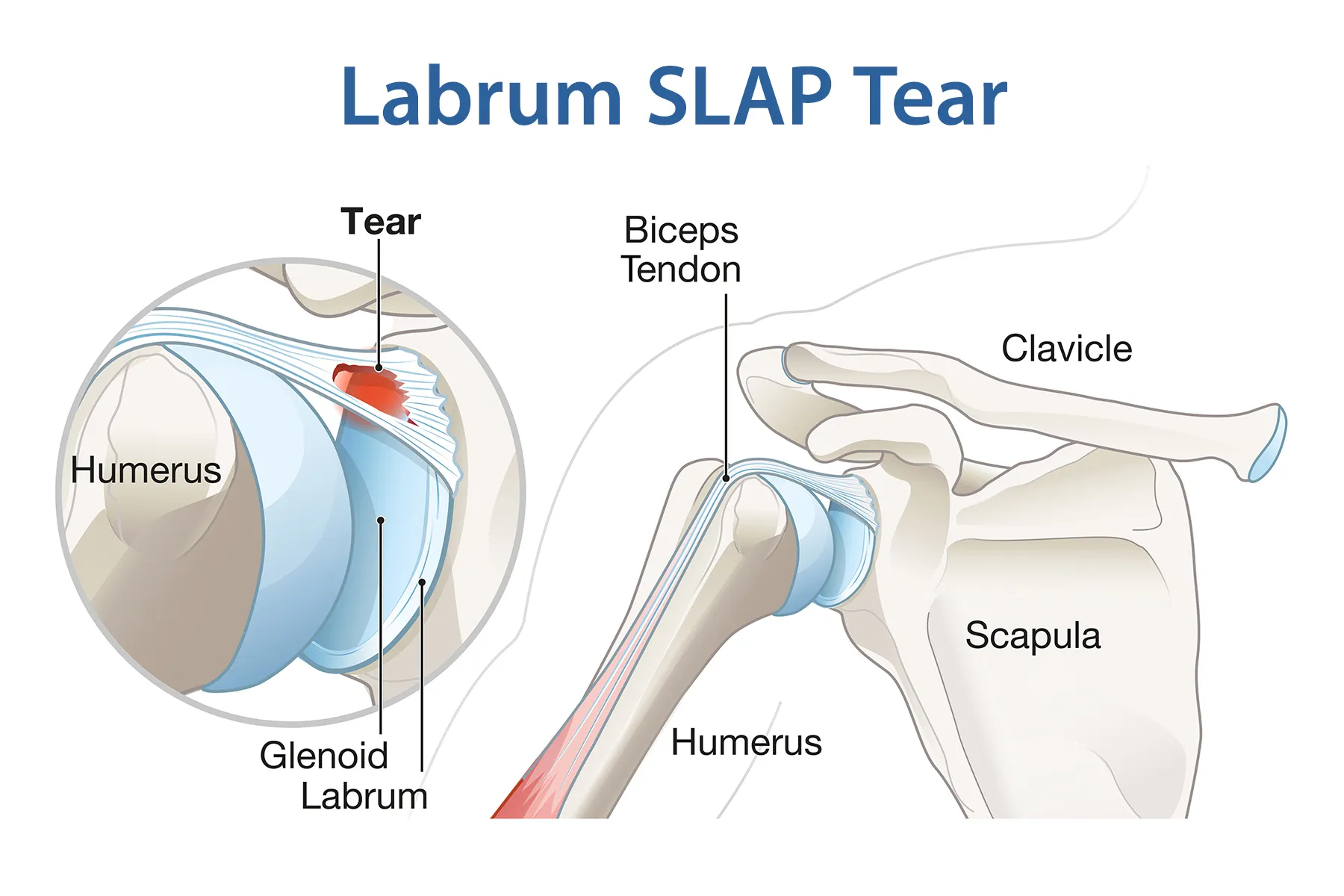The Labrum (Lb)of the Shoulder and Hip: Definition and Characteristics

What is the the labrum (Lb)?
The labrum (Lb) is a ring of fibrocartilaginous tissue found in ball-and-socket joints, most notably the shoulder (glenoid labrum) and hip (acetabular labrum). It forms a rim around the socket portion of the joint, deepening the cavity and improving the congruency between bone surfaces. The primary function of the labrum is to stabilize the joint, absorb mechanical stress, and provide attachment sites for ligaments and tendons. Injury or degeneration of the labrum can impair joint function and increase the risk of dislocation.
Characteristics
Mechanism: The labrum is composed of dense collagen fibers organized in layered arrangements, which allow it to withstand compressive, shear, and tensile forces encountered during movement. It provides a seal to the joint, maintains synovial fluid pressure, and distributes load across the articular cartilage, reducing wear and promoting smooth movement. In the shoulder, the glenoid labrum encircles the glenoid cavity to improve humeral head stability; in the hip, the acetabular labrum increases the depth and surface area of the acetabulum, preserving joint integrity under load.
Symptoms: Labral tears or degeneration may cause joint pain, clicking, locking, instability, limited range of motion, and mechanical symptoms such as catching or grinding. Hip labrum injury can also present as groin pain, while shoulder labrum injury may result in weakness or sense of slipping during overhead activity.
Risk Factors: Risk for labral injury rises with repetitive overhead or pivoting sports, trauma, joint instability, anatomical variations, and degenerative joint diseases. Activities such as baseball pitching or soccer can predispose to shoulder or hip labrum damage, respectively.
Clinical Significance
Labral integrity is essential for normal joint function and stability in the shoulder and hip. Tears or degeneration can complicate biomechanics, leading to weakness, pain, or instability. Early diagnosis using physical exams and imaging (MRI/arthroscopy) is crucial. Management depends on severity: mild cases may improve with rehabilitation, while severe tears sometimes require arthroscopic surgery to restore stability and function.
Key Points
- The labrum is a fibrocartilaginous rim that stabilizes and deepens the shoulder and hip joints.
- Injury or degeneration can cause joint pain, instability, and mechanical symptoms.
- Risk factors include repetitive athletic activity, trauma, and joint deformity or degeneration.
- Preservation of labral structure is vital for functional movement and injury prevention.
Consult with Our Team of Experts Now!
For evaluation and management of shoulder or hip pain, labral injuries, or joint instability, consult with our orthopedic and sports medicine specialists who provide personalized care using Cellular Therapy and Stem Cells and surgical expertise.
References:
- Hoang LQ, et al. Histological analysis of regenerative properties in human glenoid labrum. J Shoulder Elbow Surg. 2023 May;32(5):1234-1243. doi:10.1016/j.jse.2023.01.013. Available at: https://www.ncbi.nlm.nih.gov/pmc/articles/PMC10315864/
- Alashkham A, et al. Histology, vascularity and innervation of the glenoid labrum. Shoulder & Elbow. 2018 Apr;10(2):81-87. doi:10.1177/2309499018770900. Available at: https://journals.sagepub.com/doi/10.1177/2309499018770900
- Almajed YA, et al. Anatomical, functional, and biomechanical review of the glenoid labrum. EFORT Open Rev. 2021 Oct;6(10):1045-1055. doi:10.1302/2058-5241.6.200105. Available at: https://www.ncbi.nlm.nih.gov/pmc/articles/PMC8930820/
- Dhollander AA, et al. First insights into human acetabular labrum cell metabolism. Osteoarthritis Cartilage. 2012 Sep;20(9):1097-1100. doi:10.1016/j.joca.2012.05.022. Available at: https://www.sciencedirect.com/science/article/pii/S1063458412007741
- Ranawat AS, et al. Function of the labrum and management of labral pathology. Clin Orthop Relat Res. 2005 Mar;(441):67-71. doi:10.1097/01.blo.0000151324.04242.7a. Available at: https://www.sciencedirect.com/science/article/abs/pii/S1048666605000339















